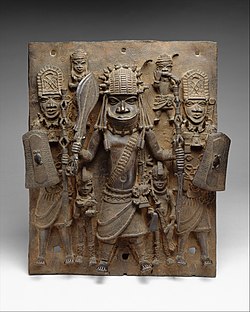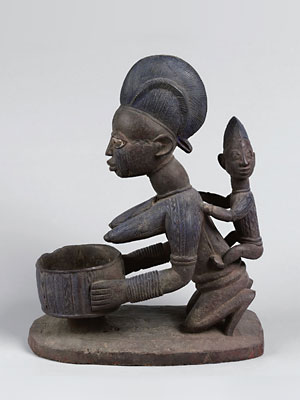African Art and Architecture: Delve into the diverse art forms, sculptures, paintings, and architectural wonders found across the continent, showcasing their cultural significance and historical context.
African Art and Architecture: Unveiling Cultural Expressions
The art and architecture of Africa are vibrant expressions of its diverse cultures, histories, and worldviews. From ancient rock paintings to contemporary sculptures, African art spans millennia and encompasses a wide range of mediums and styles. In this article, we delve into the captivating world of African art and architecture, exploring its cultural significance, aesthetic beauty, and enduring impact on the global art scene.
Diverse Expressions: Traditional African Art
Traditional African art is characterized by its diversity, reflecting the multitude of ethnic groups and cultural traditions found across the continent. It encompasses various forms, including sculptures, masks, textiles, pottery, jewelry, and body adornments. Each art form serves a specific purpose, ranging from religious rituals and ceremonies to personal adornment and storytelling.
Sculptures hold a prominent place in African art, showcasing exquisite craftsmanship and attention to detail. Wood, metal, clay, and stone are commonly used materials, each with its symbolic and cultural significance. Sculptures often depict human figures, animals, or mythical creatures, embodying spiritual beliefs, ancestral connections, and social roles within the community.
Masks, another significant art form, are used in religious and ceremonial contexts. They serve as a means of communication with ancestral spirits, embodying their power and wisdom. Masks are crafted with meticulous care, incorporating intricate designs, vibrant colors, and symbolic motifs. They are often worn during rituals, dances, and initiation ceremonies, adding a sense of mystique and spiritual energy to the occasion.
Textiles, such as woven fabrics and intricately patterned cloths, are central to African cultural identity. They are adorned with symbolic motifs and colors that reflect social status, cultural heritage, and personal narratives. Textiles are not only functional but also serve as vehicles of cultural expression, connecting individuals to their ancestral roots and shaping a sense of belonging.
Ancient Rock Art: Stories on Stone
African art encompasses more than just three-dimensional forms; it also includes ancient rock art, which provides valuable insights into the continent's prehistoric past. Rock art, found in various regions of Africa, consists of paintings and engravings on cave walls, rock shelters, and cliffs.
These art forms date back thousands of years and depict a wide range of subjects, including animals, human figures, rituals, and daily life activities. Rock art served as a means of communication, storytelling, and spiritual expression for ancient African communities. It provides a glimpse into their belief systems, hunting practices, and cultural practices, preserving a record of their existence and the landscapes they inhabited.
Notable examples of African rock art include the rock paintings of the San people in southern Africa and the Tassili n'Ajjer rock art in the Sahara Desert. The delicate brushstrokes, vivid colors, and intricate compositions reveal the artistic skills and creative sensibilities of ancient African societies.
Contemporary African Art: A Global Impact
African art is not confined to the past; it continues to evolve and thrive in the present. Contemporary African artists have gained international recognition for their innovative approaches, thought-provoking themes, and unique perspectives. They challenge stereotypes, engage with socio-political issues, and explore the complexities of identity and globalization.
One notable aspect of contemporary African art is its diverse range of mediums and techniques. Artists experiment with painting, sculpture, photography, installation, video, performance, and digital art. This multidisciplinary approach allows for the exploration of a wide range of themes and narratives, pushing the boundaries of artistic expression.
African artists often draw inspiration from their cultural heritage, infusing traditional elements with contemporary aesthetics and ideas. They navigate themes such as colonization, globalization, social inequality, gender dynamics, and environmental concerns. Through their work, they invite viewers to engage with Africa's complex history, present realities, and future aspirations.
Contemporary African architecture is also gaining recognition for its innovative and sustainable designs. From iconic structures like the Zeitz Museum of Contemporary Art Africa in Cape Town to eco-friendly buildings that merge traditional techniques with modern materials, African architects are reshaping urban landscapes and promoting sustainable development.
The Impact of African Art and Architecture
African art and architecture have a profound impact beyond the boundaries of the continent. They challenge stereotypes and misconceptions, providing a platform for African artists and architects to share their stories, perspectives, and visions with the world. African art exhibitions and biennales attract global audiences, fostering cultural exchange and dialogue.
Furthermore, the market for African art has experienced significant growth, with collectors and galleries recognizing its value and investing in works by African artists. This increased demand has created new opportunities for African artists to gain visibility, economic empowerment, and international recognition.
African art and architecture also contribute to the preservation and revitalization of cultural heritage. Museums, cultural institutions, and heritage sites play a crucial role in safeguarding and promoting African art forms, allowing future generations to connect with their roots and appreciate the diversity and richness of African cultures.
African art and architecture encompass a wide range of forms, styles, and cultural expressions. From the traditional sculptures and masks that serve as conduits to the spirit world to the ancient rock art that narrates stories of the past, African art showcases the creativity, spirituality, and cultural heritage of the continent. Meanwhile, contemporary African artists and architects continue to push boundaries, engage with global issues, and reshape the narratives surrounding Africa. By exploring and appreciating African art and architecture, we gain a deeper understanding of the continent's rich cultural tapestry and contribute to the recognition and celebration of its artistic contributions on the global stage.



Comments
Post a Comment